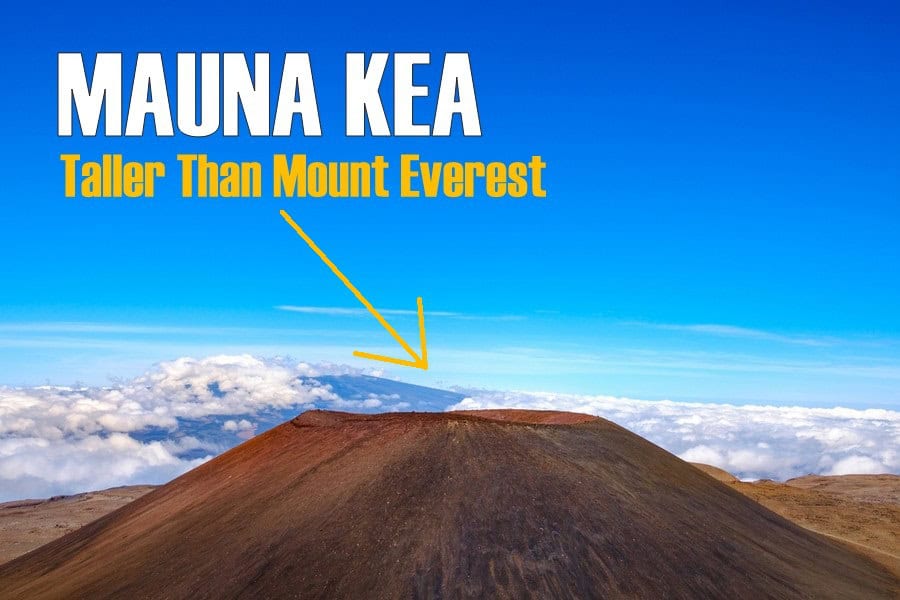
It’s common knowledge that Mount Everest in Nepal is the tallest mountain in the world. The summit of Everest reaches a staggering elevation of 29,032 feet (8,850 meters). However, if you measure a mountain from its underwater base to its peak, there is one particular volcano that is even taller – Mauna Kea.
Where is Mauna Kea Located?
Mauna Kea is located on the island of Hawaii, the largest in the Hawaiian archipelago. The mountain extends underwater, rising from the Pacific Ocean floor.
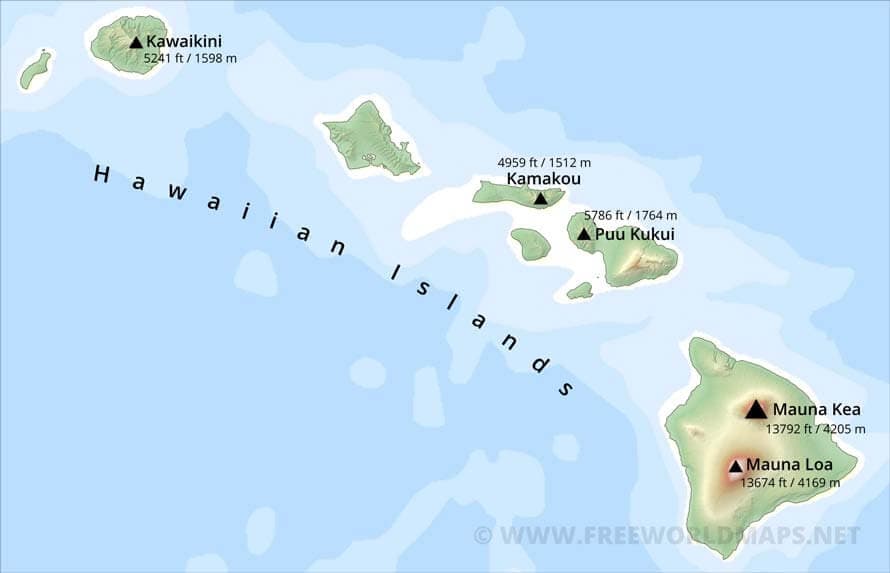
In Hawaiian, it is known as Mauna a Wākea, meaning “Mountain of the Sky Father.” Wakea, the Polynesian god of the sky, mated with Papahānaumoku, the earth mother, to give birth to the Hawaiian islands and its people.
How Was it Formed?
Mauna Kea is a volcano that was formed from the accumulation of lava flows emanating from the ocean floor. As the Pacific Plate, one of the Earth’s major tectonic plates, moved over the Hawaiian hotspot, a fixed column of hot, molten rock from the mantle reached the surface and created volcanoes.
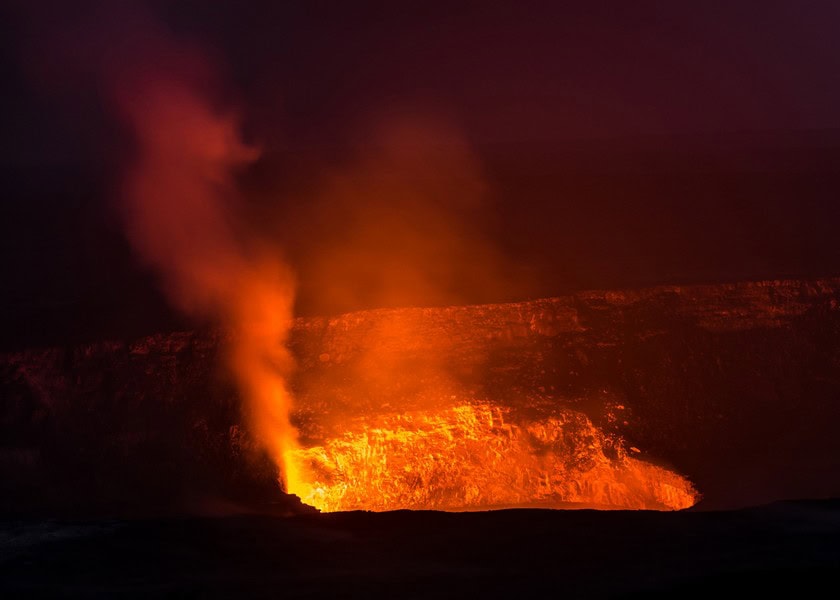
The Hawaiian Islands chain is essentially a series of mountains formed by countless eruptions over millions of years. Mauna Kea is one of these volcanoes, built up layer by layer with each eruption, adding height and mass to the mountain. It is a classic example of a shield volcano, characterized by its broad, gently sloping sides.
Though Mauna Kea last erupted approximately 4,600 years ago, it is considered dormant rather than extinct, with potential for future activity.
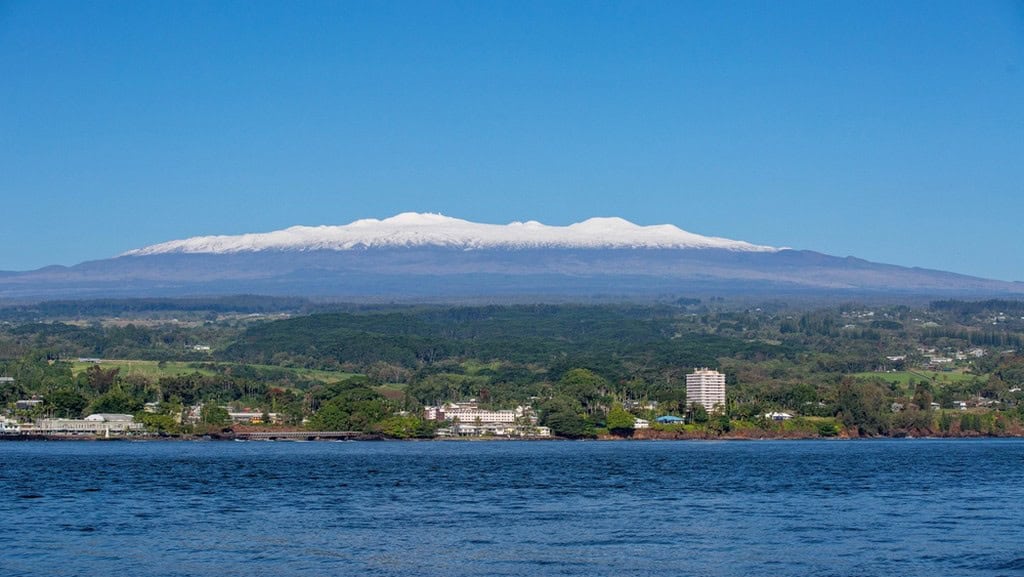
How Tall is Mauna Kea?
Mauna Kea stands 13,796 feet (4,205 meters) above sea level. However, when measured from its base on the ocean floor, it reaches approximately 33,500 feet (10,210 meters), making it the tallest mountain in the world from base to summit. It is than 4,465 feet taller than Mount Everest!
Additionally, Mauna Kea is the tallest point in Hawaii and the second tallest island peak on Earth (Carstensz Pyramid/Puncak Jaya of Indonesia is the tallest island peak, standing 16,024 feet/4,884 meters tall).
What are the Observatories on Mauna Kea?
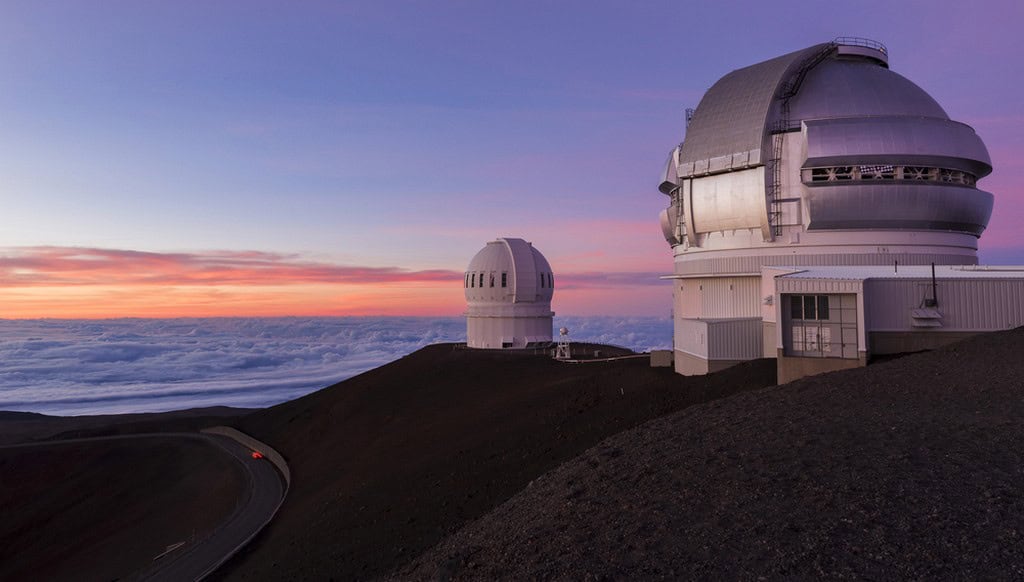
The volcano hosts one of the world’s premier astronomical observatories,. The Mauna Kea Observatories (MKO) are a group of independent astronomical research facilities located at the summit. This location is considered one of the best sites in the world for astronomical observations, thanks to its high altitude, dry environment, and stable airflow.
The summit of Mauna Kea provides near-perfect conditions for observing the night sky. The high elevation places the observatories above much of the Earth’s atmosphere, significantly reducing atmospheric interference and light pollution. Additionally, the location in the middle of the Pacific Ocean ensures minimal air pollution and stable weather conditions, which are crucial for high-quality astronomical data.
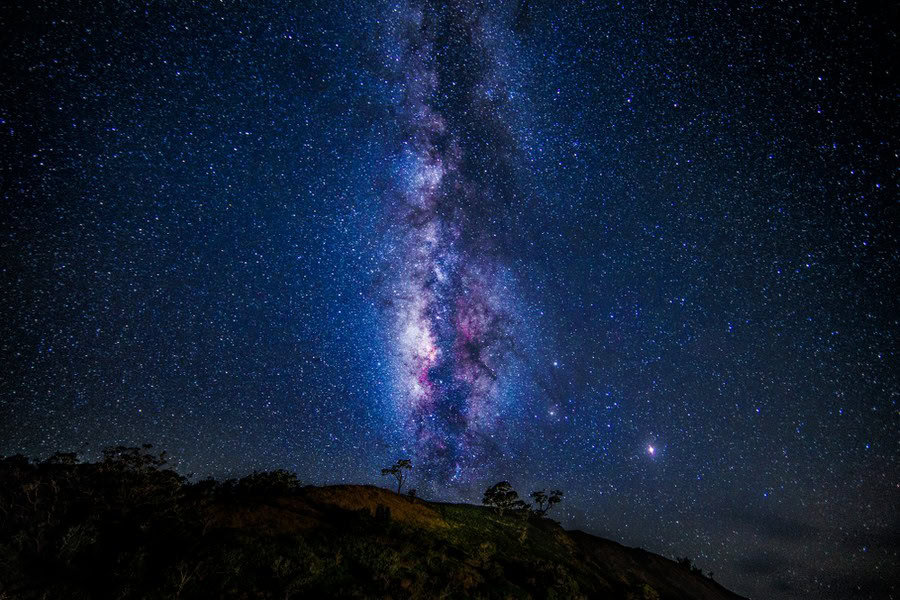
Mauna Kea has some of the world’s most advanced and powerful telescopes.
What is the Cultural Significance of Mauna Kea?
Mauna Kea holds cultural and spiritual importance for the Native Hawaiian community. Mauna Kea is viewed as a sacred piko, or umbilical cord, connecting the Hawaiian people to their ancestors and the gods.
It is considered the dwelling place of the gods, particularly the sky father Wākea, who is central to Hawaiian cosmology. The summit, being the highest point, is seen as the closest place to the heavens, a portal between the divine and the earthly realms.
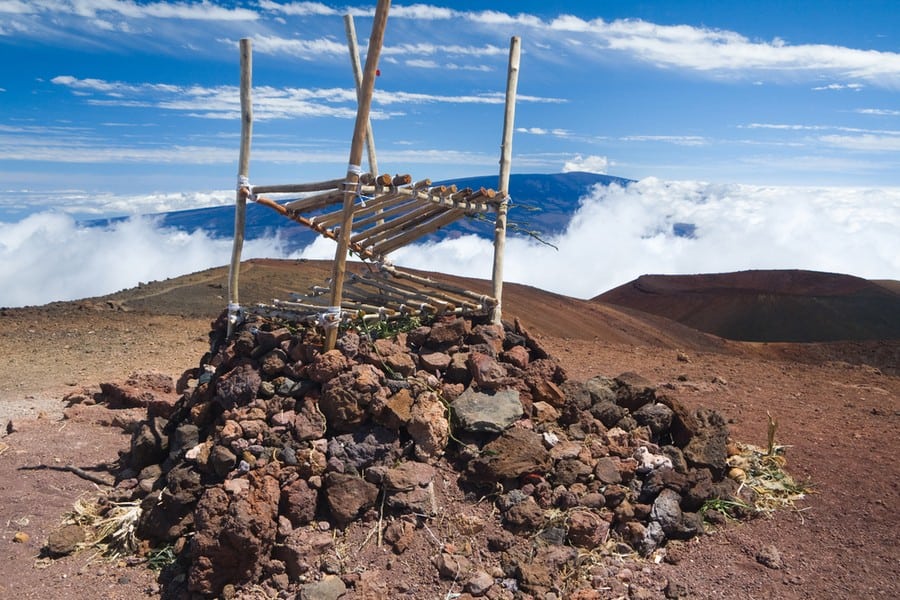
The slopes and summit of Mauna Kea contain numerous archaeological sites, including shrines, burial sites, and stone altars. Traditional gatherings and ceremonies continue to be held on the mountain to honor and perpetuate Hawaiian culture.
How Long Does it Take to Climb Mauna Kea?
From the visitor center at 9,200 feet (2,800 meters), it takes about 6-8 hours to hike the nearly 12 mile trail to the summit and back.
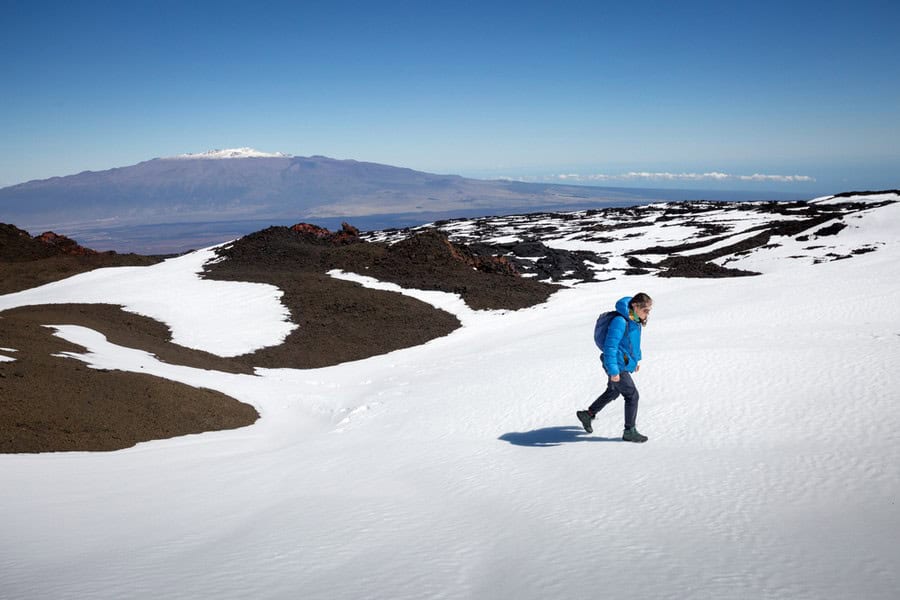
There is a public road that takes you to the top, so many visitors drive to the summit to observe the sunset or sunrise. Note that it is mandatory to have a 4WD vehicle to do this. Two-wheel drive vehicles are not allowed. This is enforced by park rangers who will also require visitors to stop for at least half an hour at the Mauna Kea Visitor Information Station to (briefly) acclimatize to the altitude.
How Hard is it?
Hiking to the top of Mauna Kea is considered moderately challenging due to the distance, grade and altitude. The primary risks involve altitude sickness and the potential for bad weather conditions, including high winds and surprisingly cold temperatures.
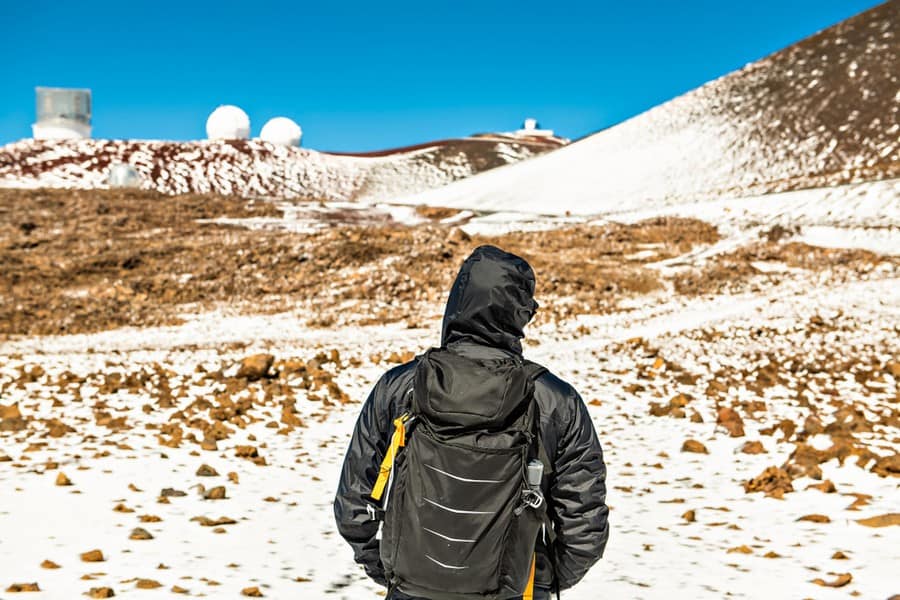
Can Beginners Hike Mauna Kea?
Yes, beginners can hike Mauna Kea. But, a good level of cardiovascular fitness and the ability to acclimatize to high altitude is advised.
Who Was the First Person to Climb Mauna Kea?
Native Hawaiians have been visiting the summit for a long time as the mountain holds significant cultural importance. However, the first recorded ascent by Westerners was by Joseph F. Goodrich in 1823.
How Many People Visit Mauna Kea?
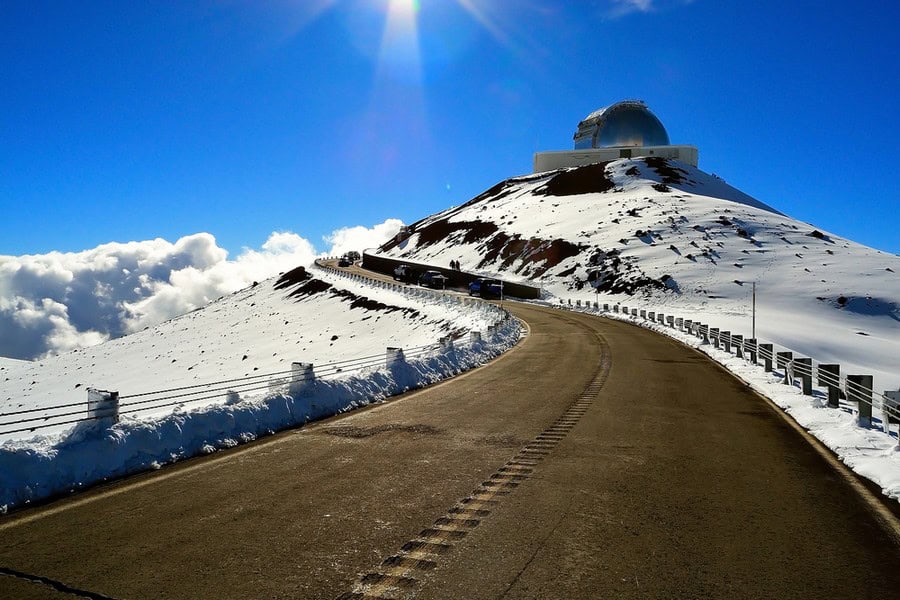
Approximately 100,000 people visit Mauna Kea each year, with most accessing the summit area by vehicle to visit the observatories and view the skies.
What is the Best Time to Visit Mauna Kea?
The best time to visit is during the dry season, from April to October, when the weather is more stable and there is less precipitation. For the most spectacular views, arrive just before the sun sets. Nighttime temperatures at the summit can drop below freezing, so appropriate clothing is essential. Overnight stay is not permitted.
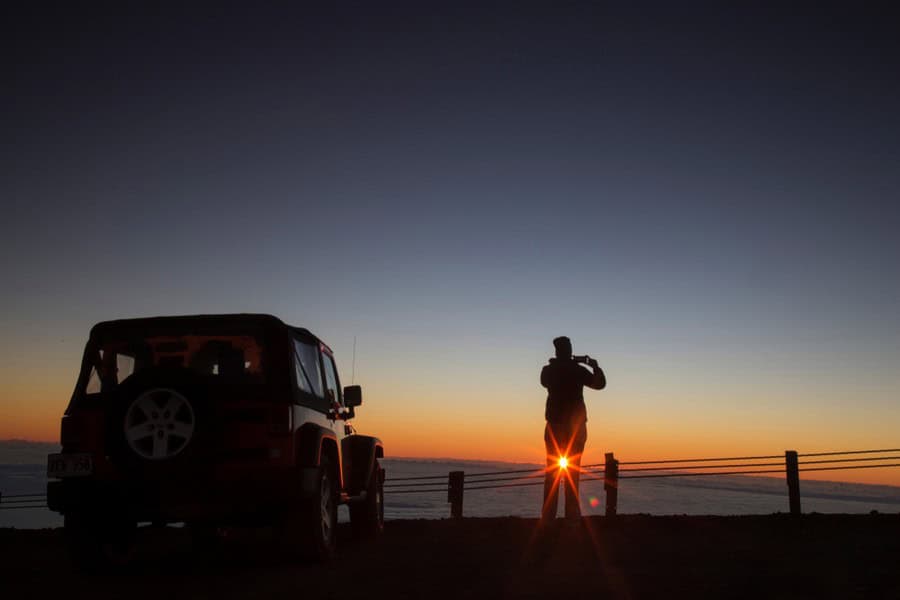
What are the Different Climate Zones?
Mauna Kea spans several climate zones:
- Lowland Coastal (Below 2,000 feet): Warm and humid, typical of tropical islands, with lush vegetation.
- Montane Forest (2,000 to 6,000 feet): Cooler, with mixed forest vegetation.
- Subalpine (6,000 to 9,000 feet): Characterized by shrubland and rough terrain.
- Alpine/Summit (Above 9,000 feet): Barren, with rocky terrain and minimal vegetation, temperatures are often below freezing at night.
How Many Trails Are on Mauna Kea?
There are several trails suitable for hiking, with varying degrees of difficulty. The Mauna Kea Trail is the primary route for those aiming to reach the summit on foot.
Mauna Kea Summit Trail
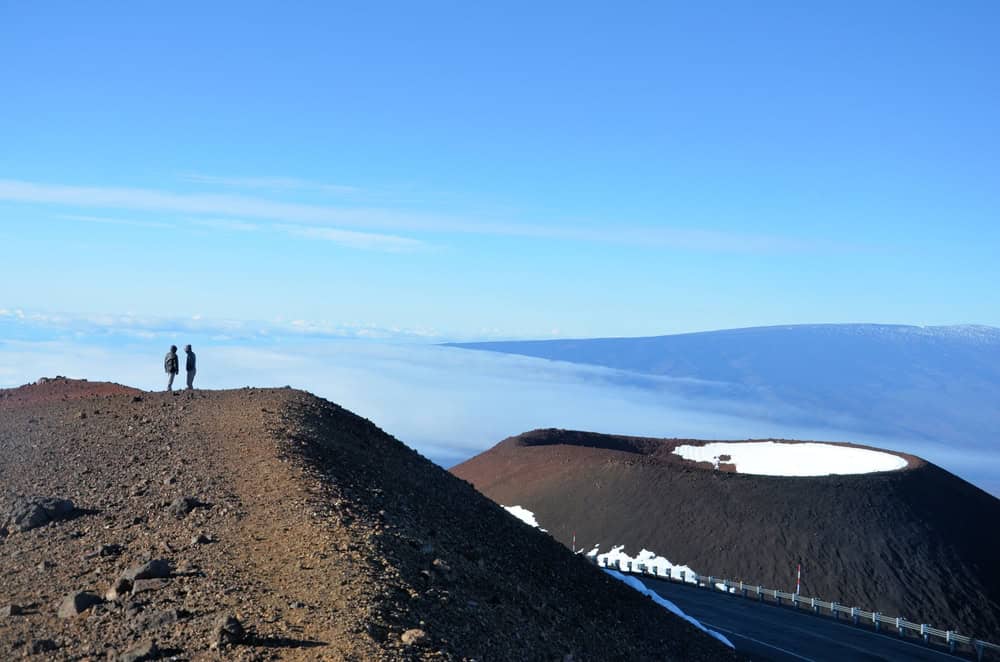
The trail ascends through different climate zones, starting from a rocky, semi-arid region into more sparse, volcanic landscapes as it approaches the summit. The route offers spectacular views of the surrounding landscape and skies.
- Start Point: The trail begins at the Onizuka Center for International Astronomy Visitor Information Station, situated at 9,200 feet (2,800 meters).
- Distance: Approximately 6 miles (9.7 kilometers) one way.
- Elevation Gain: Roughly 4,600 feet (1,400 meters).
- Duration: It typically takes 6-8 hours round trip, depending on pace and acclimatization.
- Difficulty: Challenging due to high altitude and steep sections.
Humu‘ula Trail
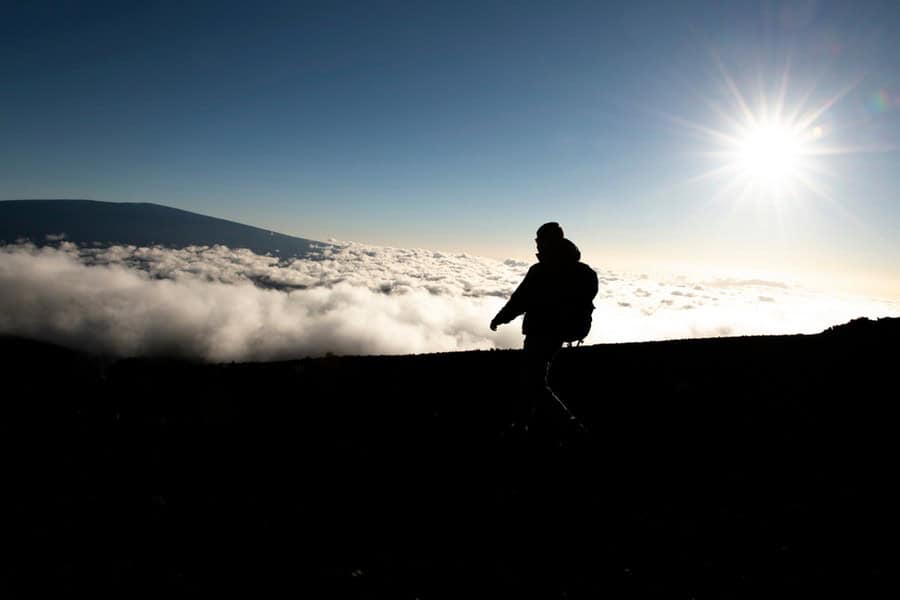
Humu‘ula Trail offers a more gradual ascent compared to the direct Summit Trail, crossing through varied landscapes including shrublands and volcanic terrains, and provides a more in-depth exposure to Mauna Kea’s natural environment.
- Start Point: This trail starts from near the visitor center, similar to the Summit Trail.
- Distance: Around 8 miles (12.9 kilometers) one way.
- Elevation Gain: It ascends more than 4,500 feet (1,370 meters).
- Duration: Around 9 hours round trip.
- Difficulty: Very challenging due to the longer distance and significant elevation gain.
Lake Waiau Trail
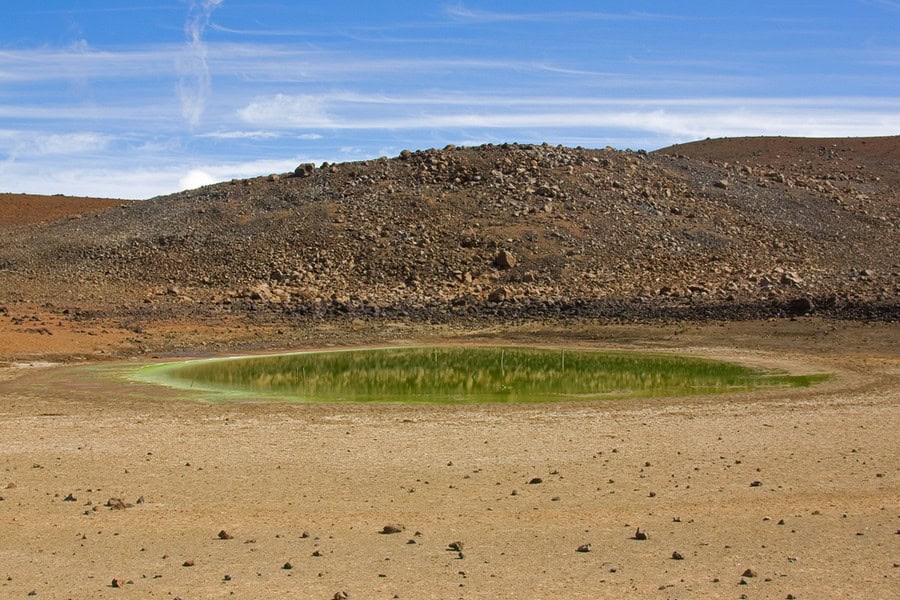
This trail begins near the summit of Mauna Kea and leads to one of the highest alpine lakes in the USA, Lake Waiau. It’s a small, shallow glacial tarn known for its cultural significance to Native Hawaiians.
- Start Point: Access is via the Mauna Kea Summit Trail or directly from a rough four-wheel drive road that branches off the summit access road.
- Distance: About 1 mile (1.6 kilometers) round trip from the summit trail.
- Elevation: Located at around 13,020 feet (3,970 meters).
- Duration: Approximately 30 minutes to 1 hour.
- Difficulty: Moderate, primarily due to the high altitude rather than terrain.
How Much Does it Cost to Visit Mauna Kea?
There is no cost to hike Mauna Kea itself. There is no admission fee or cost to access the public road that leads to the summit.
How Does Mount Kilimanjaro Compare to Mauna Kea?
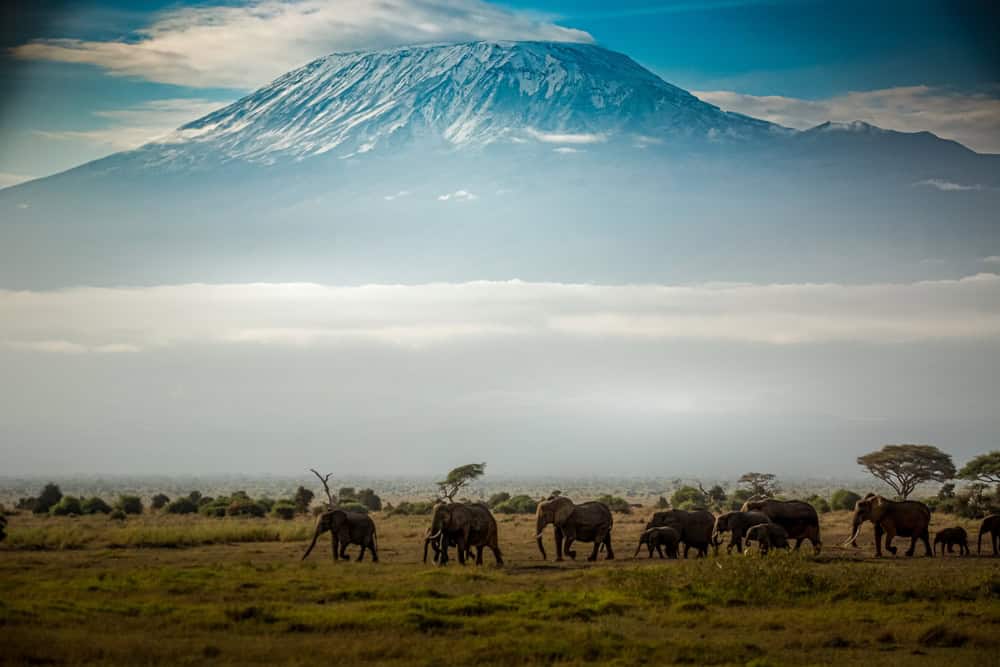
Both Kilimanjaro and Mauna Kea are volcanic in origin. Kilimanjaro is a stratovolcano comprising three volcanic cones whereas Mauna Kea is a shield volcano, formed by numerous lava flows. Additionally, both are dormant volcanoes.
Each mountain is notable for its high altitude. Kilimanjaro is the highest peak in Africa at 19,341 feet (5,895 meters), while Mauna Kea stands significantly lower, at 13,796 feet (4,205 meters) above sea level.
Climbing Kilimanjaro involves trekking through various climate zones over several days, requiring no technical climbing skills. Mauna Kea can be accessed by road up to the summit, making it unique among high peaks. However, hiking to the summit still involves a high-altitude trek, albeit shorter and less diverse in ecological exposure.
Both mountains hold deep cultural and spiritual significance for the indigenous peoples of their respective regions. Kilimanjaro is seen as a symbol of beauty and majesty in Tanzania, while Mauna Kea is considered sacred in Hawaiian culture, embodying the connection between the earthly and the divine.
Interested in climbing Kilimanjaro? Start here.




























































